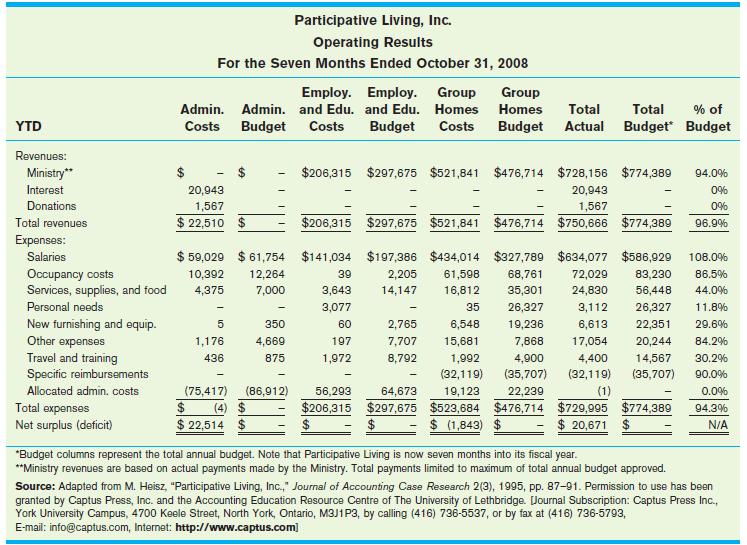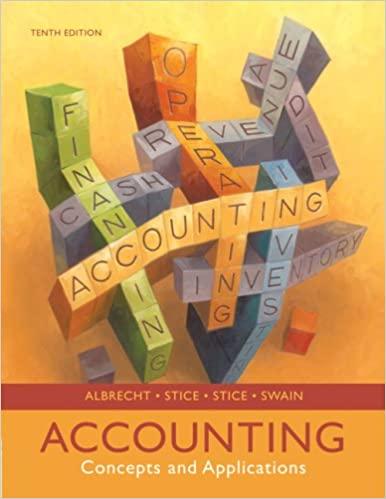Participative Living, Inc. Participative Living, Inc. (a fictitious name) is an actual charitable organization in a mediumsize
Question:
Participative Living, Inc.
Participative Living, Inc. (a fictitious name) is an actual charitable organization in a mediumsize community in Canada. It was organized by parents of disabled adults to provide accommodation and training for severely disabled adults in the community. With the help of the Ministry of Community and Social Services, the parents eventually organized six different homes, each with two to four residents. In addition to the six homes, Participative Living also had an employment and education program that provided training and assistance for residents seeking employment or educational opportunities. Overall, the organization had eight divisions composed of six homes, the employment and education program, and an administrative program. A supervisor who reports to the Participative Living executive team staffs each division. The executive team, in turn, reports to a volunteer board of directors composed of 12 people from the community.
Participative Living is a not-for-profit organization. Hence, while surpluses and deficits are occasionally expected, each division is expected to break even each operating period.
Seven of the eight divisions are established as break-even operations, with responsibility for both revenues and expenses. The main revenue source is the Ontario government, through the Ministry of Community and Social Services, which provides all funding necessary to support each home as well as the employment and education program. All costs of Participative Living’s administrative division in excess of any donations from the community are allocated to its other seven divisions. The Ministry follows a procedure of disbursing operating funds for all social service agencies under its direction based on annual operations budgets submitted to the Ministry. Generally, the Ministry is not concerned about whether an individual budget item was overspent as long as the overall spending is within the approved budget.
As a result, it became a common practice among agencies to transfer expenses from one budget line to another and, in the case of Participative Living, to transfer expenses from one division to another depending on which division had excess budgeted funds. As with most government organizations, the Ministry’s administrative process of reviewing and approving a new home for Participative Living is often quite slow. As long as the Ministry is holding up the establishment of a proposed new home, it provides significant interest payments to Participative Living. The Ministry was making large interest payments during the first few months of Participative Living’s 2009 fiscal year (which ended on March 31, 2009) while the organization waited for government approval and funding of the sixth group home.
In November 2008, Mr. Brad Dunford, the executive director of Participative Living, Inc., was reviewing the financial statements for the first seven months of the 2009 fiscal year. He was puzzled about how the agency could suddenly be $50,000 over budget in salaries and benefits when just last month the statements indicated that spending was slightly under budget.
1. As you review operating results for the last seven months at Participative Living, Inc., what problems do you foresee?
2. Consider the style of management and management accounting in this not-for-profit organization, as well as its relationship with the Ministry of Community and Social Services. What aspects of the way business is conducted here do you think have led to the current situation?

Step by Step Answer:

Accounting Concepts And Applications
ISBN: 9780324376159
10th Edition
Authors: W. Steve Albrecht, James D. Stice, Earl K. Stice, Monte R. Swain





